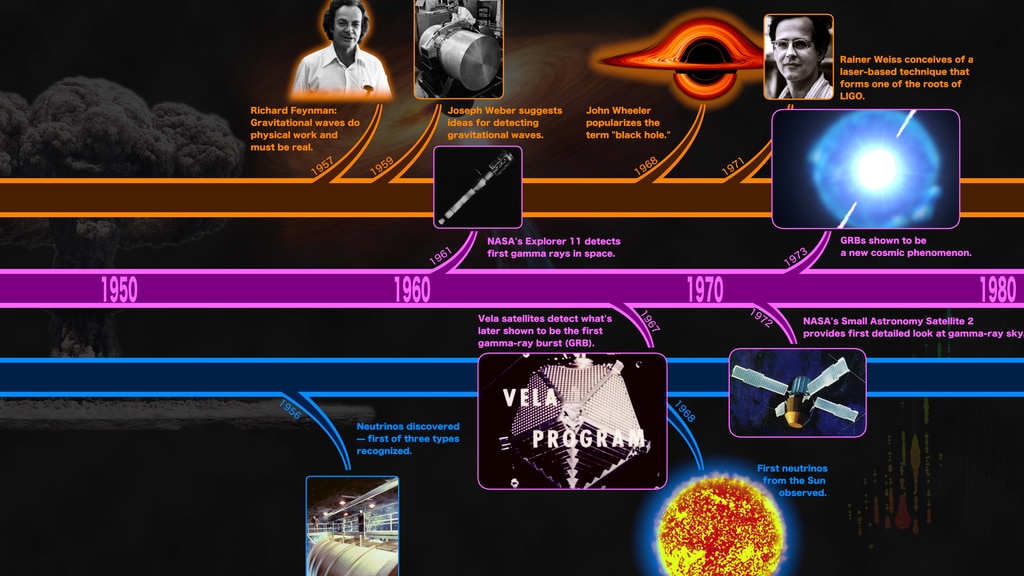Multimessenger Timeline Resources
The media elements below appear in the multimessenger astronomy video "Luck Favors the Prepared."
A simple animation of a gamma ray moving through space.
Credit: NASA's Goddard Space Flight Center
This animation illustrates cosmic ray particles striking Earth's atmosphere and creating showers of particles.
Credit: NASA's Goddard Space Flight Center
An artistic animation of the Sun.
Credit: NASA's Goddard Space Flight Center
A visualization of a black hole and its surrounding accretion disk.
Credit: NASA's Goddard Space Flight Center/Jeremy Schnittman
NASA's Gamma-Ray Imaging Spectrometer (GRIS) is readied for its fifth balloon flight at Alice Springs, Australia, in 1992. The experiment made nine trips into the stratosphere for a total flight time of 223 hours.
Credit: NASA's Goddard Space Flight Center/Steve Snodgrass
The Italian-Dutch satellite BeppoSAX played a crucial role in resolving the origins of gamma-ray bursts (GRBs), brief, powerful explosions initially discovered in 1967 by the U.S. Vela satellites. On Feb. 28, 1997, moments after a GRB was detected, BeppoSAX turned its X-ray telescopes to the location and spotted an X-ray afterglow -- the first GRB observation in a wavelength other than gamma rays. The satellite's accurate positions, together with other observations, showed that GRBs originate beyond our Milky Way galaxy.
Credit: BeppoSAX Science Data Center and Agenzia Spaziale Italiana
Shown here is a computer simulation of the merger of two black holes and the resulting emission of gravitational radiation. Colored fields represent a component of the curvature of space-time. The outer red sheets correspond directly to the outgoing gravitational radiation detected by gravitational-wave observatories. The brighter yellow areas near the black holes do not correspond to physical structures but generally indicate where strong non-linear gravitational-field interactions are in play.
Credit: NASA/C. Henze
Credits
Please give credit for this item to:
NASA's Goddard Space Flight Center. However, individual items should be credited as indicated above.
-
Producer
- Scott Wiessinger (USRA)
-
Science writer
- Francis Reddy (University of Maryland College Park)
Release date
This page was originally published on Thursday, November 8, 2018.
This page was last updated on Wednesday, May 3, 2023 at 1:46 PM EDT.
